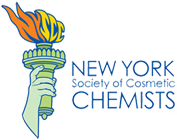As a skin biologist and researcher of technology in the personal care field for over 20 years, there are few times in one’s career that you experience a trend that has the legs to become a new playing field in science. The skin microbiome strides made in recent years have truly been remarkable. Not only have the number of products available addressing the skin microbiome exploded but the number of research papers and articles on the topic has captivated the industry. Furthermore, it highlights the direction and utilization of systems biology as a tool by applying the learnings of microbiology, skin biology, biochemistry, genetics and ecology all into one discipline. The field is still in its infancy and in constant transition as the methods and models being employed are still being optimized to reduce bias and improve precision and accuracy.
The single primary driver of this new frontier are the remarkable advancements in high throughput gene sequencing and the computational analysis required to handle massive amounts of data and put it into a meaningful perspective. Not only can we identify bacteria faster and more cost efficiently, but now we understand through genetic comparisons that strains of a species can differ significantly resulting in the difference between health and disease under a variety of conditions. This was one of many topics permeating throughout a recent scientific microbiome congress held in Boston pulling together forces within the industry to form a multi-disciplinary approach to the opportunities and advancements within this growing field. Other topics included consumer education, regulatory preambles, biological target identification, microbiome relevance, host-biome interactions and advances in technology used to study the human microbiome.
With all science comes controversy. Areas of debate range from what defines a healthy microbiome to how diverse the microbiome should be and why our skin is losing its biodiversity. Many claims and research point to our forefathers (hunter gatherer societies today) as having a much more diverse skin microbiome than modern man. Thus, the prevalence of skin-related issues is markedly reduced in tribes living in the Amazon compared to that of our modern city dweller. This loss of biodiversity has been linked to a significant increase in allergy-related disease. Furthermore, the use of preservatives and complex ingredients in skin care products has been deemed suspect. The relevance to other trendy areas within skin care can now be woven with a new perspective. These include the role of pollution and the duration of solar radiation exposure. Since the skin is the youngest organ in our body in terms of evolution, the sun and atmospheric environment plays a major role in its phenotype and function. Research is now linking the evolution of our skin microbiome to the same influential environmental pressures.
The skin microbiome is the total sum of all microbes that live on or in the skin. It is a highly dynamic entity that is analogous to a beehive in that it is responsive and adaptive to the many internal and external factors influencing its environment all simultaneously. The exciting aspect of the skin microbiome is that it will force traditional science to think differently. Application of environmental science theorems are now being placed into equations, hypotheses, and experimental designs previously limited to a classical reductionist algorithm that one needs to understand the parts before understanding the whole. This modality of scientific exploration has been dominated by the study of molecules explaining cells which, in turn, explains the function of tissues and helps us to understand how organs work and interact with in systems.
This is just part of the story. Moving forward, we now must consider levels of organization that typically ended with an understanding of our own species. With the skin microbiome, we need to consider the fundamentals of science from a more complex standpoint. For instance, a full understanding of strain introduction within a species, population diversity with in specific organs, and communities of microbes between body sites are now combined with our classical understanding of skin biology to explain how this entire ecosystem influences our day to day function, health, and disease. Truly, a new frontier awaits us. I guess this is what the explorers Louis and Clark felt like starting their journey to the Pacific Ocean.
So where are we in this journey? Researchers have characterized the human skin microbiome as both functional and site specific as it pertains to different regions on the body. The two most distinct body environments are those with sebum and those without. Compounding these areas are those under humidity, occlusion, and moisture and those that are not. Of course, there are other microclimates on or in our skin including the follicular surface areas of hair, sweat and eccrine glands. Understanding how each of these microclimates works at different stages of life, within ethnic groups, different geographical locations, and between the sexes is just the tip of the iceberg.
Areas of the skin that are rich in sebum have garnished much attention as these areas are most prone to acne as illustrated in work done by Prouty and Pappas. It is within this area that we see some very interesting correlations with our skin actually regulating its own biodiversity. Hair follicle-associated sebaceous glands secrete sebum, a highly complex lipid mixture that covers the skin surface and hair shafts. The functional versatility of lipids, combined with the wide array of sebaceous lipid classes, provide skin with a substrate that facilitates adaptation to diverse environmental situations, including interactions with microbes. Analysis of sebum and its components have shown that a particular specific fatty acid called sapienic acid (16:1 n10), has been shown to be antimicrobial to Staphylococcus Aureus, the very species implicated in flare reactions in atopic dermatitis. Furthermore, infection by Staphylococcus aureus is associated with a reduction in sapienic acid in the sebum of patients with atopic dermatitis, and topical application of sapienic acid is correlated with decreased bacterial load and reduction of symptoms. Taken together, this strongly suggests that sapienic acid functions as a “first-line” component of the innate immune system at the skin’s surface.
The beauty of this great journey is that it may explain and give way to an entirely new approach to skin care. Host-biome interactions will be the focus of healthy immune development from birth to treating maladies such as atopic dermatitis, rosacea, acne, and dandruff, and body odor. Learnings from the skin microbiome are migrating into oral and vaginal health arenas, changing the way we look at health and disease as well.
While research scientists unravel the complexities of the skin microbiome, the interest from within the industry is also buzzing with discovery and innovation. There seems to be multiple avenues to enter this space and all have shown some level of promise in terms of delivering on claims. We can certainly thank the yogurt industry for laying the ground work with the consumers. From study data presented in Boston, consumers (especially Millennials) seem to get the concept of taking care of your skin the same way you take care of your gut microbiome. Although, most consumers have a rudimentary understanding of microbiome, they are very willing to try products targeting it. Reinforcing a healthier lifestyle, conforming to more natural-based hygiene practice or looking to change the way their skin behaves is all the motivation consumers need.
New technologies and innovation are taking form in a variety of ways. Prebiotics seem to be gaining the most momentum in skin care as evidenced by the number of new prebiotic technology offerings seen at the last two In-Cosmetics shows. Prebiotics are those materials that feed, nourish, and/or manage the skin microbiome in some form or fashion. Examples of prebiotics are polysaccharides, polyols, free fatty acids, fibers nitrogen sources, and lactic acid. By focusing on prebiotics, many technology companies avoid the complexities of having to grow live cultures of bacteria to generate a second category called probiotics. With this strategy, we see the use of live bacteria whether sourced from skin or other substrates like soil. Some are using the very bugs found in yogurt while others are applying species said to be part of our microbiome during earlier times of human existence but were lost.
This category of products is the most complex and wrought with controversy. Should live or dead microbes be used? How do skin bacterial communities change with new species introduction? How much biodiversity is too much? All of these questions are being studied at every level of complexity. Another branch of probiotics is now emerging by genetically engineering normal flora strains to secrete enzymes and factors needed to correct deficiencies in skin physiology. A well-known condition called atopic dermatitis is characterized by inflammation, itch, a reduction in barrier function, and loss of moisturization. Researchers are now programing Staphylococcus epidermidis, a commensal microbe (found to be reduced in atopic dermatitis) to secrete barrier-related proteins, enzymes to increase lipids, and antimicrobial peptides to reduce the Staph aureus load (which supersedes that of Staphylococcus epidermidis in atopic dermatitis). Lastly, we have the category of postbiotics. This group consists of fermentation products and supernatants from bacterial culture. These materials are the next generation prebiotics. Designed and targeted to shift to better microbiome health, an increase in biodiversity, and to provide a new way to achieve clean healthy beauty.
The journey to understanding the skin microbiome is well underway. Nobody knows for sure where we will be in the next 5 to 10 years. The models and methods used to study the skin will advance and become more sophisticated as well, as the products and claims associated with these new discoveries develops. It is exciting to see so many disciplines coming together to unravel the mysteries of our microbial populations and communities living and working with us in so many ways. New levels of understanding will be achieved in exploring commensal and symbiotic relationships with our tiny friends. The skin microbiome field will inevitably fall into sub-specialties where you have the folks looking to keep skin clean and free of microbes while others will look to preserve and propagate the populations of beneficial microbes to sustain and promote healthy skin. When it comes to research into the skin microbiome, we truly are the sum of all of our parts and then some.

Michael Anthonavage has 20+ years of experience in personal care product development and a career spanning background in skin biology. Michael has extensive knowledge in product development in the area of personal care product design and specializes in R&D to marketing translation. He is an engaging public speaker and product technology advocate with an ability to marry complex ideas and concepts to various consumer needs. Michael is currently the Director of Advanced Clinical Services at CRL. Michael’s previous positions involved R&D leadership positions at Johnson & Johnson Consumer Products, Presperse and Vantage Specialty Chemicals. Michael is currently on the NYCSCC Scientific Advisory Board and has a number publications and patents to his name.

